Creating User Accounts with Active Directory

Full-Access Members Only
Sorry, this lesson is only available to Server Academy Full-Access members. Become a Full-Access member now and get instant access to this and many more premium courses. Click the button below and get instant access now.
Instructions
Q&A (0)
Notes (0)
Resources (0)

Saving Progress...
Resources
There are no resources for this lesson.
Notes can be saved and accessed anywhere in the course. They also double as bookmarks so you can quickly review important lesson material.
In this lesson you will learn how to create Active Directory user accounts.
Step 1. Open Server Manager
Open Server Manager by clicking the Windows button and clicking Server Manager or by searching for Server Manager.
Step 2. Start Active Directory
In server manager, click Tools > Active Directory Users and Computers:
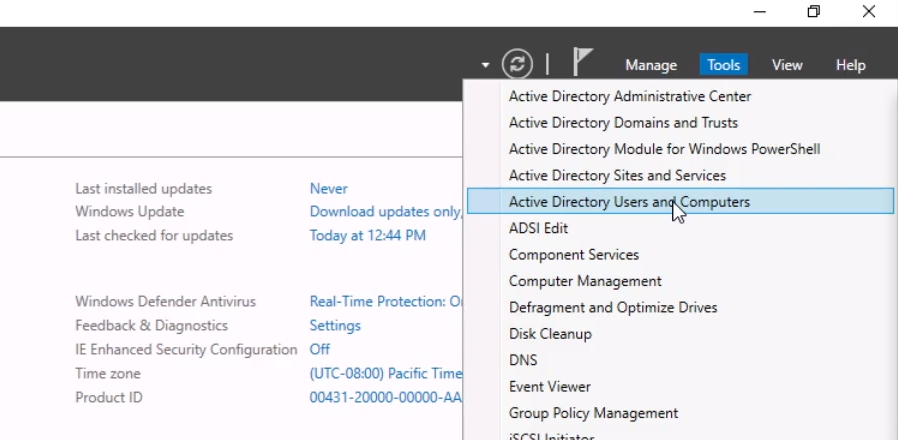
Step 3. Create the Active Directory User
Right click on your desired OU and select New > User:
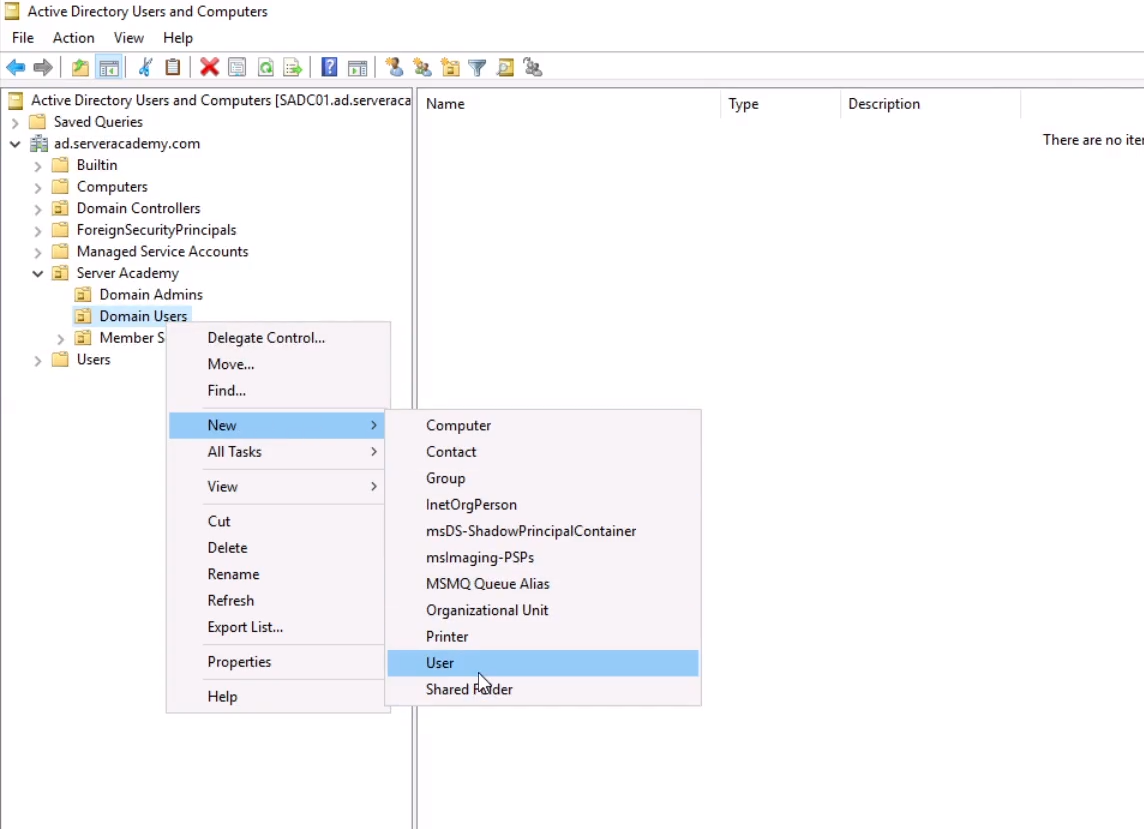
Now the new user window will appear. Specify your users info like first name, middle initial (if you want), last name and user name.
For the user logon name I prefer to use the first.last format, but this is really up to you. Whatever you decide, make sure all of your users keep the same consistent naming convention.
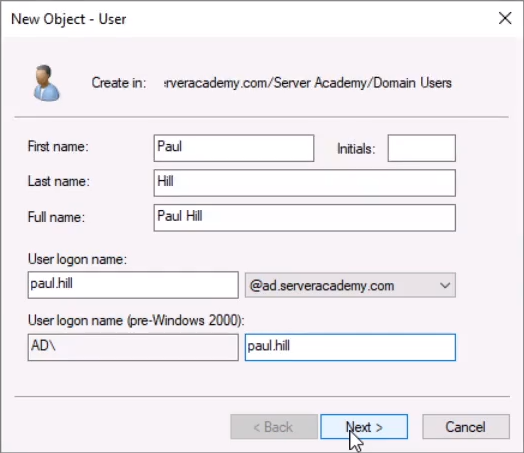
Once you enter all of these details you can click Next.
Step 4. Configure Password
On the next page you will create the new users password. Below the two password prompts, we have the option to specify the following settings:
User must change password at next logon
When the user logs in, they will receive a message forcing them to change the password before logging in as shown below:
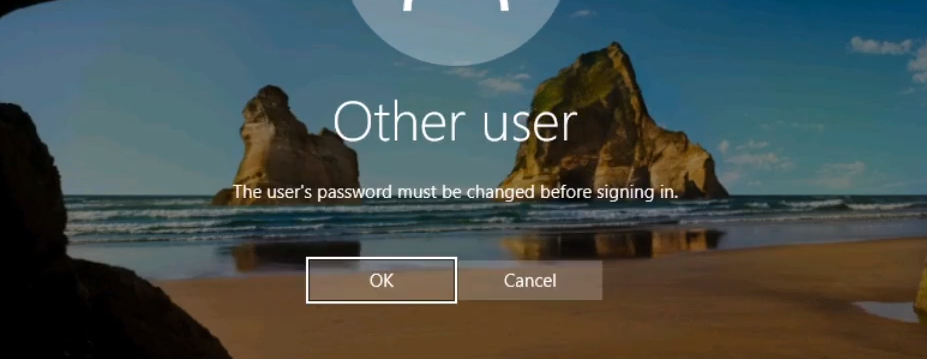
User cannot change password
This setting will not allow the user to change their password once they log in. Selecting this is a BAD security practice.
Password never expire
This will configure the user account to not be force to reset their password when their password expires. The length of time before a password expires is configured with Group Policy. Using this setting is also a BAD security practice.
Account is disabled
This is a good option to use when you’re creating a user account for a new hire that doesn’t start for another two weeks. You don’t want to have active user accounts that are not being used.
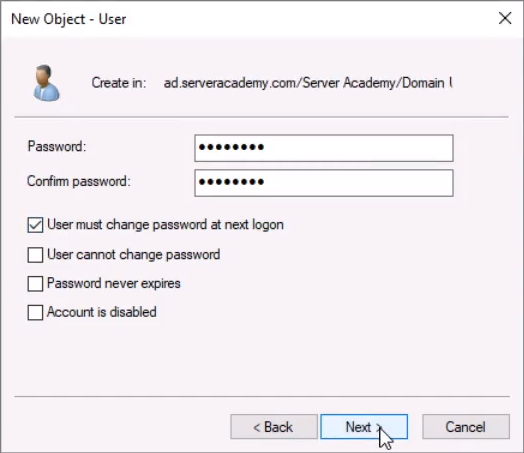
Click Next.
Step 5. Complete User Account
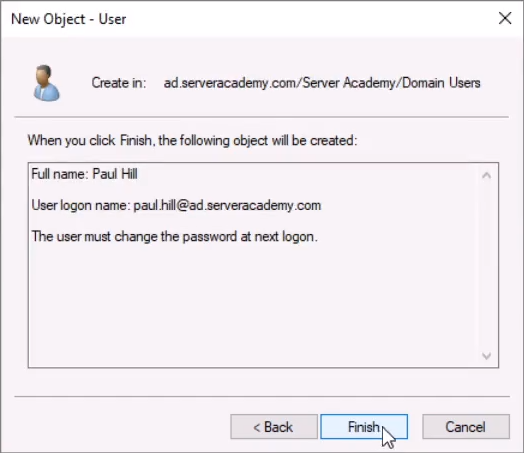
Click Finish to complete the user account process.

Server Academy Members Only
Sorry, this lesson is only available to Server Academy Full Access members. Become a Full-Access Member now and you’ll get instant access to all of our courses.



“The sign-in method you’re trying to use isn’t allowed…”
Can this video be updated to resolve this issue as video does not make mention of when to add user to the “Member of Domain Admins “?
Hmm yes, we will fix this! Thanks for reporting.
How come there isn’t closed captioning for hearing impaired?
Hi Thomas Strow
Thomas Strow
We are sorry about it. Most of the videos have CC/Subtitles, but it seems not all of them have. We will check then to update.
Thank you,
Ricardo
Which video shows Windows 10 PC joined to the server?
Hi Waqas Munawar,
Waqas Munawar,
Check the following video link. We have one under the WSUS course, under the lesson named Installing Windows 10:
https://www.serveracademy.com/courses/installing-and-configuring-windows-server-update-services-wsus/installing-windows-10-edited/
Ricardo